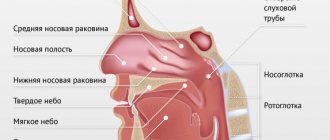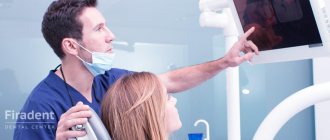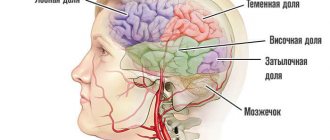Cardiac aneurysm (aneurysma cordis) is a limited protrusion of a thinned area of the heart wall. Most often develops as a result of myocardial infarction. Congenital, infectious, traumatic, and postoperative cardiac aneurysms are much less common. Traumatic aneurysms occur due to closed or open heart injuries. This group also includes aneurysms that occur after operations for congenital heart defects.
In the overwhelming majority of cases, cardiac aneurysm is a complication after a myocardial infarction (usually transmural). Up to 25% of heart attack patients may be affected by this disease.
Dangerous complications of chronic cardiac aneurysm are gangrene of the limb, stroke, kidney infarction, pulmonary embolism, and repeated myocardial infarction. When a cardiac aneurysm ruptures, death occurs instantly.
Based on the time of occurrence, aneurysms are divided into acute (1-2 weeks from the onset of myocardial infarction), subacute (3-6 weeks) and chronic. Most often, post-infarction aneurysms are localized on the anterolateral wall and at the apex of the left ventricle; in 50-65% of cases they spread to the anteroseptal region.
Left ventricular aneurysm is diagnosed so often because of the maximum blood pressure in this ventricle. Up to 50% of the surface of the left ventricle may be damaged as a result of the pathological process.
1 Left ventricular aneurysm
Aneurysm of the posterior wall of the left ventricle is observed in 2-8% of patients. Blood clots are often found in the aneurysm cavity, but the incidence of thromboembolic complications is no more than 13%.
Definition:
A cardiac aneurysm is a pathological condition that is accompanied by protrusion of the wall of the heart muscle. It is one of the complications after a myocardial infarction and can develop within several months after its onset. An aneurysm not only negatively affects the functioning of the heart and its contractile functions, but also poses a serious danger to life due to the possibility of sudden rupture.
Treatment of cardiac aneurysm
It is impossible to eliminate a cardiac aneurysm using conservative treatment methods, and when the first signs of heart failure appear, the question of surgery is raised. The main treatment method for cardiac aneurysm is surgical excision and suturing of the defect in the heart wall. In some cases, the aneurysm wall is strengthened using polymer materials.
In the preoperative period, cardiac glycosides, anticoagulants, antihypertensive drugs, oxygen therapy, and oxygen barotherapy are prescribed. Patients are advised to strictly limit physical activity.
The cardiology department of MedicCity has all the necessary equipment to carry out comprehensive diagnostics of a wide range of cardiac diseases. Reception is conducted by highly qualified cardiologists who have completed professional internships in Russia and abroad.
Cause
Usually the cause of the formation of a cardiac aneurysm is a heart attack, most often of the left ventricle of the heart. When they talk about the development of myocardial infarction, the damaged parts of the heart are weakened, and under the influence of blood pressure they can bulge. Blood trapped in them forms a blood clot. Aneurysms occur in patients with atherosclerotic cardiosclerosis and cardiosclerosis of other origins. Much less common are aneurysms that arise due to other reasons: infections, injuries, and congenital defects.
Diagnosis of cardiac aneurysm
In 50% of patients, pathological precordial pulsation is detected.
ECG signs are nonspecific - a “frozen” picture of acute transmural myocardial infarction is revealed, there may be rhythm disturbances (ventricular extrasystole) and conduction (left bundle branch block).
ECHO-CG allows you to visualize the aneurysm cavity, determine its size and location, and identify the presence of a parietal thrombus.
The viability of the myocardium in the area of chronic cardiac aneurysm is determined by stress echocardiography and PET .
Using chest x-ray, it is possible to detect cardiomegaly and congestive processes in the blood circulation.
1 ECG - a method for diagnosing cardiac aneurysm
2 ECHO-CG - a method for diagnosing cardiac aneurysm
3 Chest X-ray
ventriculography, MRI and MSCT are also used to determine the size of the heart aneurysm and detect thrombosis of its cavity.
For the purpose of differential diagnosis of the disease from coelomic pericardial cyst, mitral heart disease, mediastinal tumors, probing of the heart cavities and coronary angiography may be prescribed .
Classification
Depending on the time period after myocardial infarction the aneurysm formed, the following forms are distinguished:
- Acute and subacute - develop in the early stages after a heart attack, often complicated by incomplete rupture.
- Chronic - formed after acute due to the replacement of a dead section of the heart muscle with connective tissue. They can be muscular, musculofibrous or fibrous.
Symptoms of the disease
As a rule, the disease occurs without symptoms. In most cases, an aneurysm is discovered accidentally - during a routine examination. If symptoms appear, they are expressed in the area of the aortic arch. Some of the most striking signs of the development of the disease include:
- heavy snoring;
- shortness of breath, cough;
- sharp chest pain;
- discomfort during swallowing.
In some cases, individual signs of a cardiac aortic aneurysm may appear.
Diagnosis of the disease
Diagnosis of the disease begins with the patient visiting a therapist. In this case, the specialist collects anamnesis, analyzes the existing symptoms, and then refers the patient to a highly specialized specialist. To confirm the diagnosis, additional laboratory and hardware tests are prescribed:
- clinical, general urine and blood tests: allow you to determine the presence of pathologies that affect the further development of the disease;
- echocardiography: helps determine the type, shape, size of the aneurysm;
- X-ray: shows enlarged heart, pulmonary edema.
In some cases, MRI of the heart vessels is prescribed to obtain important data.
Make an appointment Make an appointment and get a high-quality examination of the heart and blood vessels in our center
Prevention
When diagnosing this disease, it is important to resort to effective preventive measures. These include the following activities:
- maintaining a healthy lifestyle;
- refusal to drink alcohol, smoke;
- timely examination by a doctor.
In addition, the patient must form the correct diet. Meals for aortic aneurysm should be nutritious. At the same time, the menu should not include fatty foods. Sufficient physical activity is another component of prevention. If a patient has acute chest pain for more than 6 minutes, the patient should seek immediate medical attention.
Symptoms
Symptoms of acute cardiac aneurysm are weakness, shortness of breath, fever, pulmonary edema, sweating, heart rhythm disturbances, and swelling of the veins in the neck. During the transition to the subacute form, symptoms of coronary insufficiency quickly develop.
With chronic cardiac aneurysm, signs of cardiovascular failure are observed: edema, angina attacks, rhythm disturbances. Complications of the disease can be thromboembolic syndrome with damage to peripheral vessels and arteries of the brain. If you experience such signs, immediately contact the cardiology center.
When an acute aneurysm ruptures, death occurs almost instantly. In this case, the patient experiences severe pallor, hoarse, difficult breathing, cold sticky sweat, congestion of the neck vessels, and cold extremities.
Heart aneurysm
According to the time of occurrence, acute, subacute and chronic cardiac aneurysm are distinguished. Acute cardiac aneurysm forms within 1 to 2 weeks from myocardial infarction, subacute - within 3-8 weeks, chronic - over 8 weeks.
Acute aneurysm
In the acute period, the wall of the aneurysm is represented by a necrotic area of the myocardium, which, under the influence of intraventricular pressure, bulges outward or into the ventricular cavity (if the aneurysm is localized in the area of the interventricular septum).
Subacute aneurysm
The wall of a subacute cardiac aneurysm is formed by a thickened endocardium with an accumulation of fibroblasts and histiocytes, newly formed reticular, collagen and elastic fibers; in place of destroyed myocardial fibers, connecting elements of varying degrees of maturity are found.
Chronic aneurysm
A chronic cardiac aneurysm is a fibrous sac microscopically consisting of three layers: endocardial, intramural and epicardial. In the endocardium of the wall of a chronic cardiac aneurysm there are proliferations of fibrous and hyalinized tissue. The wall of a chronic cardiac aneurysm is thinned, sometimes its thickness does not exceed 2 mm. In the cavity of a chronic cardiac aneurysm, a parietal thrombus of various sizes is often found, which can line only the inner surface of the aneurysmal sac or occupy almost its entire volume. Loose mural thrombi are easily fragmented and are a potential source of risk of thromboembolic complications.
There are three types of cardiac aneurysms: muscular, fibrous and fibromuscular. Typically, a cardiac aneurysm is single, although 2-3 aneurysms may be detected at the same time. Cardiac aneurysms can be true (represented by three layers), false (formed as a result of a rupture of the myocardial wall and limited to pericardial adhesions) and functional (formed by a section of viable myocardium with low contractility, bulging during ventricular systole).
Taking into account the depth and extent of the lesion, a true cardiac aneurysm can be flat (diffuse), saccular, mushroom-shaped, and in the form of an “aneurysm within an aneurysm.” In a diffuse aneurysm, the contour of the external protrusion is flat, gentle, and on the side of the heart cavity there is a cup-shaped depression. A saccular cardiac aneurysm has a rounded, convex wall and a wide base. A mushroom aneurysm is characterized by the presence of a large protrusion with a relatively narrow neck. The concept of “aneurysm within an aneurysm” refers to a defect consisting of several protrusions enclosed within one another: such cardiac aneurysms have sharply thinned walls and are most prone to rupture. During examination, diffuse cardiac aneurysms are more often detected, less often - saccular aneurysms, and even less often - mushroom-shaped and “aneurysms within an aneurysm”.
Diagnostics
It is impossible to diagnose an aneurysm without an instrumental examination. Therefore, after collecting anamnesis and examining the patient, the doctor issues a referral to:
- ECG;
- Echo-CG;
- MRI;
- MSCT of the heart (multispiral computed tomography);
- Heart PET (positron emission tomography);
- myocardial scintigraphy (isotope scan) - intravenous administration of radioactive isotopes (radionuclides) to assess absorption by the heart muscle;
- EPI (electrophysiological study) - stimulation of various parts of the heart to detect life-threatening arrhythmias;
- coronary angiography and cardiac probing - X-ray contrast examination (catheterization) - insertion of a special catheter through the artery.
Complications without surgery
Small LV aneurysms usually do not pose a threat to the patient’s life, although in rare cases they can provoke thromboembolic complications due to the formation of parietal thrombi in the heart cavity, which are carried by the blood flow to other arteries and can cause a heart attack, stroke, pulmonary embolism or mesenteric artery thromboembolism (PE). and mesenteric thrombosis).
Complications with aneurysms of medium and giant sizes are more common and are as follows:
- Thromboembolic complications,
- Progression of chronic heart failure, development of acute heart failure,
- Rupture of an aneurysm, leading to the rapid death of the patient.
Prevention of complications is the timely detection of aneurysm growth, regular examination by a doctor, as well as timely identification of indications for surgical treatment.
Clinical picture
Symptoms are nonspecific. The classic triad is represented by:
- Shortness of breath;
- Pain syndrome;
- Feeling of irregularities and rapid heartbeat.
Shortness of breath is of a mixed nature and is manifested by difficulty in both inhalation and exhalation. The pain syndrome develops like angina pectoris - within 10-15 minutes after physical activity. The feeling of interruptions is due to developing arrhythmia and can be paroxysmal or permanent.
Other manifestations:
- Fainting;
- Edema;
- Decreased exercise tolerance;
- Insomnia;
- Sudden cardiac death.










